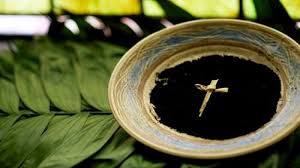Ash Wednesday, its significance and origin

On Ash Wednesday, you may encounter Christians, especially Catholics, wearing a smudge of ashes on their foreheads.
That could be a bit startling, unless you know the meaning behind this religious practice.
Here is what you should know about Ash Wednesday and the celebration of Lent.
We have also included information about Lenten services in Marion and Hamilton counties in Indiana as well as special restrictions because of the coronavirus pandemic.
What is Ash Wednesday?
Ash Wednesday — officially known as the Day of Ashes — is a day of repentance, when Christians confess their sins and profess their devotion to God.
During a Mass, a priest places the ashes on a worshiper’s forehead in the shape of a cross.
The ceremony, which also can be performed by a minister or pastor, is meant to show that a person belongs to Jesus Christ, and it also represents a person’s grief and mourning for their sins the same sins that Christians believe Jesus Christ gave his life for when he died on the cross.
Ash Wednesday is important because it marks the start of the Lenten period leading up to Easter, when Christians believe Jesus was resurrected.
The ashes symbolize both death and repentance. During this period, Christians show repentance and mourning for their sins, because they believe Christ died for them.
When the priest applies the cross of ashes, he says to the worshiper: ““Remember that you are dust, and to dust you shall return.” He also may say “Repent and believe in the Gospel.”
It is not required that a worshiper wear the ashes for the rest of the day, although many Christians choose to do so. However, dining out or doing non-essential shopping are considered inappropriate on Ash Wednesday.
The Rev. Tom Kryder-Reid, right, signs the cross of ashes on the forehead of Siara Reyes, as others wait their turn, on Ash Wednesday “Ashes On The Go!” offered at Christ Church Cathedral on Monument Circle, on Feb. 14, 2018. People could come up to receive the ashes and head on their way.
Where do the ashes come from?
Traditionally, ashes used on Ash Wednesday are gathered up after palms from the previous year’s Palm Sunday are burned. They are then blessed before being used in the ceremony.
Palms are used on Palm Sunday in many Christian churches to symbolize Jesus’ triumphant entry into Jerusalem on the Sunday before his crucifixion. Residents of Jerusalem are said to have waved palm fronds to celebrate his arrival.
Can Catholics eat meat on Ash Wednesday?
No. Catholics are not supposed to eat meat on Ash Wednesday. They also are expected to give up meat on Fridays during Lent.
Catholics also are expected to fast on Ash Wednesday. Fasting means consuming only one full meal a day; two smaller meals that don’t together add up to a full meal also are allowed.
Intermittent fasting:This man fasts from 17 to 24 hours a day. Here’s how he says it’s changed his life.
Children and the elderly are exempt from the fasting requirement on Ash Wednesday and during Lent.
READ ALSO: Asian Catholics to mark subdued Ash Wednesday amid virus fears
Some Protestant denominations, including Anglicans, Episcopalians, Lutherans, United Methodists and Presbyterians, also hold worship services on Ash Wednesday.
Is Ash Wednesday based on a pagan festival?
No. Early Christians in Rome were sprinkled with ashes during Lent, but the Ash Wednesday practice of placing ashes on the forehead of Christians didn’t begin until the Middle Ages.
When is Ash Wednesday in 2021?
Ash Wednesday falls on a different day each year, because it is dependent on the date of Easter. It can occur as early as Feb. 4 or as late as March 10.
Last year, it fell on Feb. 26. This year, Ash Wednesday is on Feb. 17.
Ash Wednesday always occurs six and a half weeks before Easter. Easter will be celebrated this year on Sunday, April 4.








